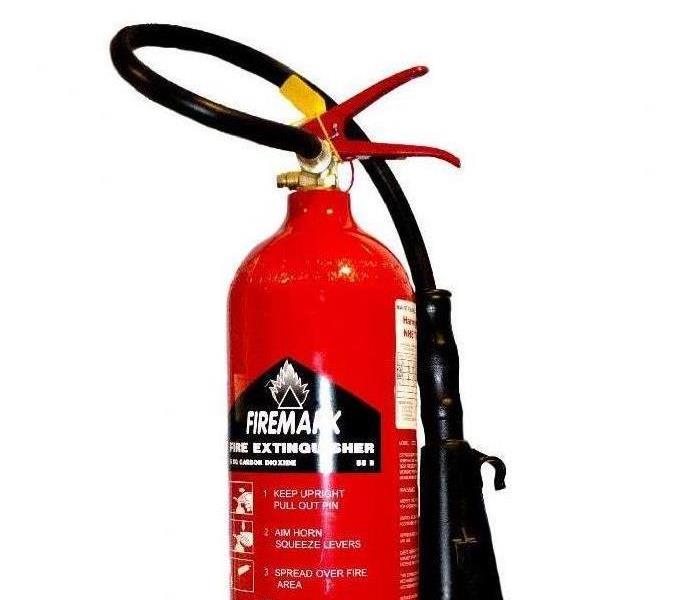Safety Tips For Using A Fire Extinguisher
9/22/2020 (Permalink)
OSHA states that fire is the most common emergency occurrence owners of homes and small businesses should plan for. One of the best ways to be prepared is by having a fire extinguisher readily available, making sure it’s properly maintained and audited, and by being educated on its proper use. This will already be a fire safety requirement for any business, and it’s a good idea for the homeowner, as well.
OSHA requires employers to train their staff thoroughly on how to use a fire extinguisher correctly and to accurately assess the situation if a fire is to occur so that it can be determined if/when an evacuation needs to take place. OSHA has established annual training for employees as a minimal requirement for all places of business, and this training is helpful for homeowners as well.
The PASS training technique is recommended:
- P. Pull the pin on the extinguisher.
- A. Aim the nozzle of the hose at the base of the fire.
- S. Squeeze the handle to release the extinguishing agent.
- S. Sweep the nozzle from side to side, directed at the base of the flames, until the fire is extinguished.
Once someone knows how to properly operate a fire extinguisher, they should then also be trained to follow fire safety protocol. Such training should enable anyone to be able to:
- Locate and activate the fire alarm.
- Call the fire department and emergency responders immediately.
- Determine a safe evacuation route that will direct people away from flames, excessive heat, and smoke. They should also know how to keep the route from becoming blocked.
- Use the PASS technique for discharging a fire extinguisher (outlined above), and know the importance of backing away from the area if the fire flares up again.
- Evacuate the area immediately if the fire is still going and the extinguisher is empty, or if the fire grows beyond what can be safely handled without fire department personnel.
NOTE: Fire extinguishers are made to handle small fires only. If the environment becomes too dangerous, everyone should know when and how to evacuate. Excessive smoke and heat, impaired evacuation routes, and poor visibility are all conditions that can evolve very quickly, and people need to understand that safety comes first and foremost.
SERVPRO of Hurst-Euless-Bedford is here to help with cleanup projects both large and small and are dedicated to getting your business Certified: SERVPRO Cleaned. We also handle mold prevention and remediation, as well as fire damage and water damage.






 24/7 Emergency Service
24/7 Emergency Service
